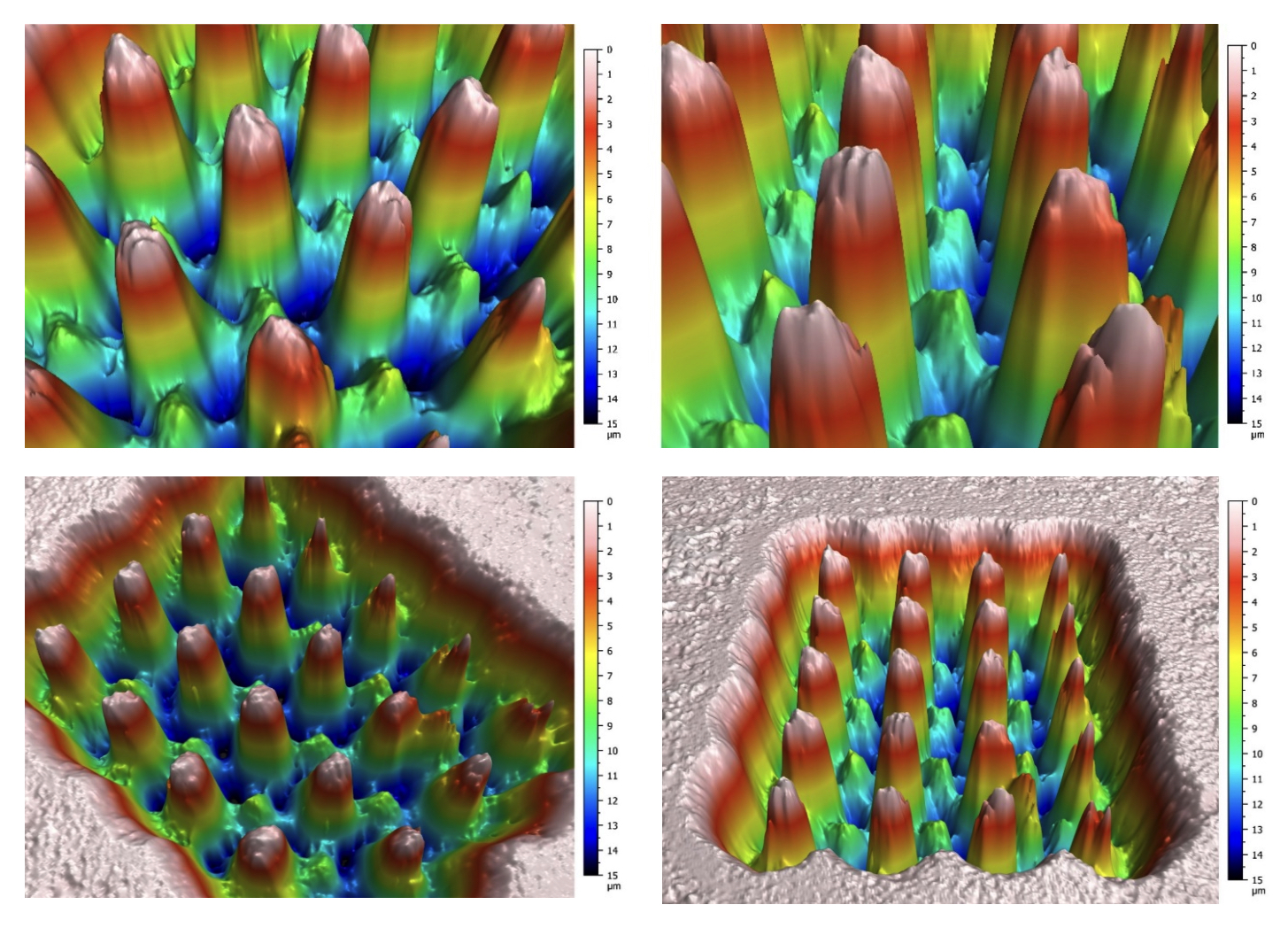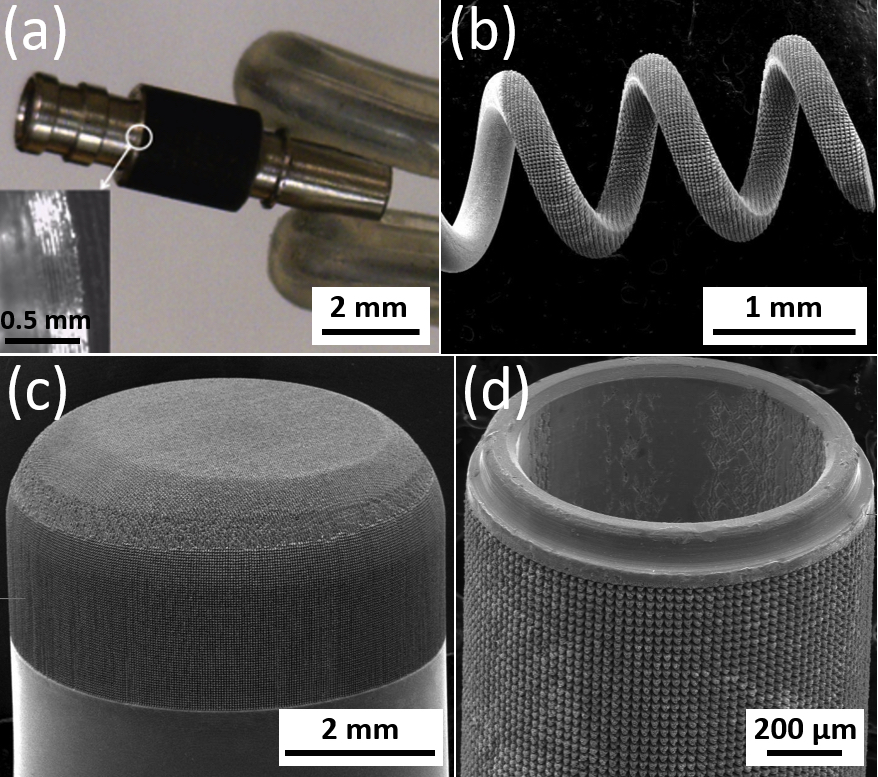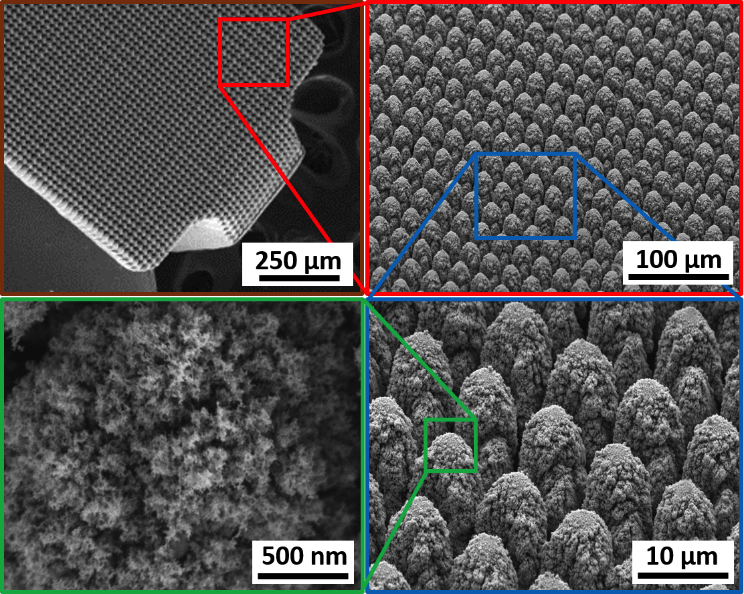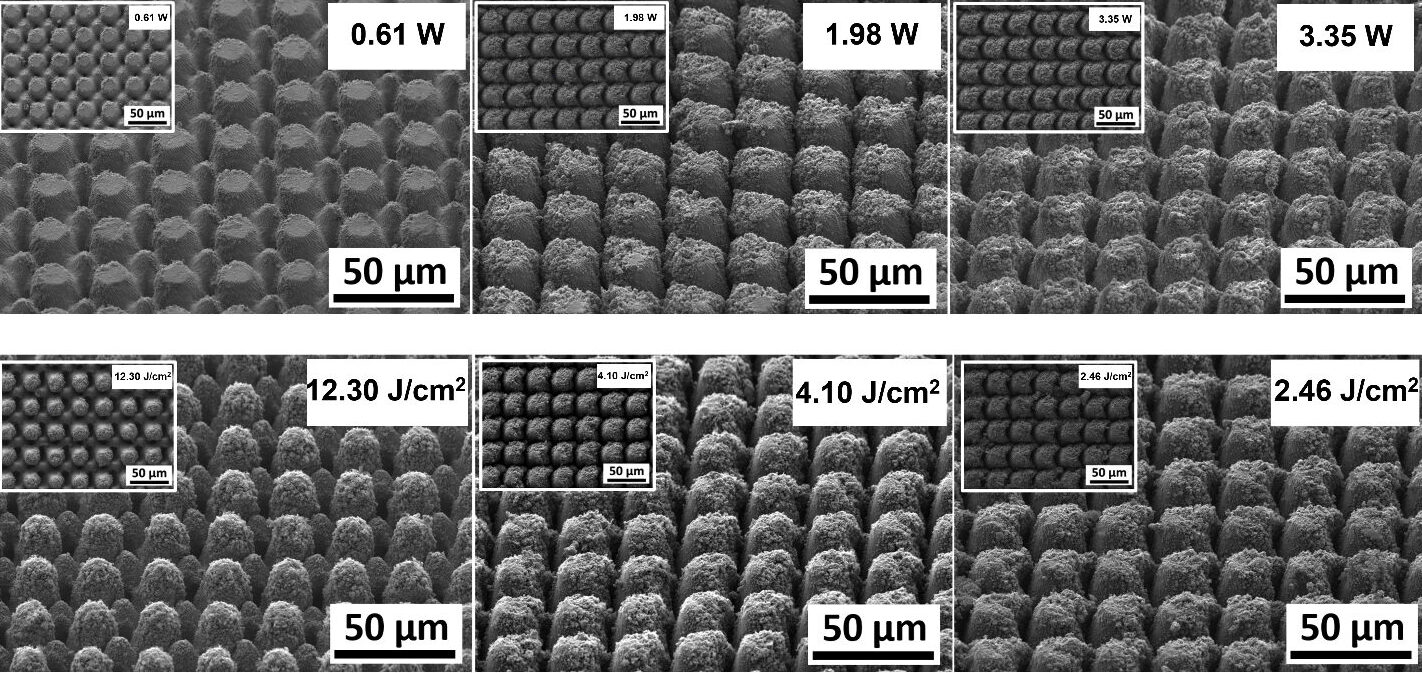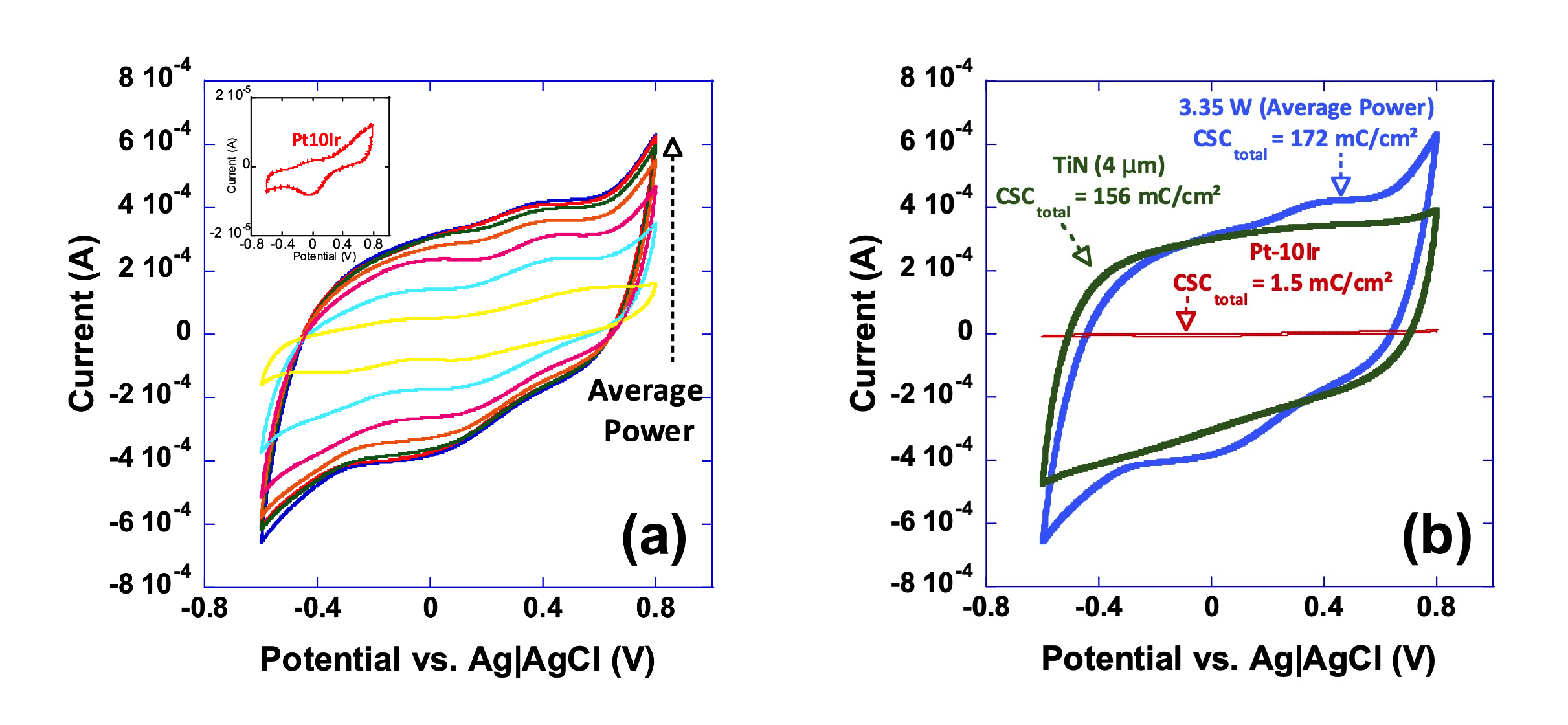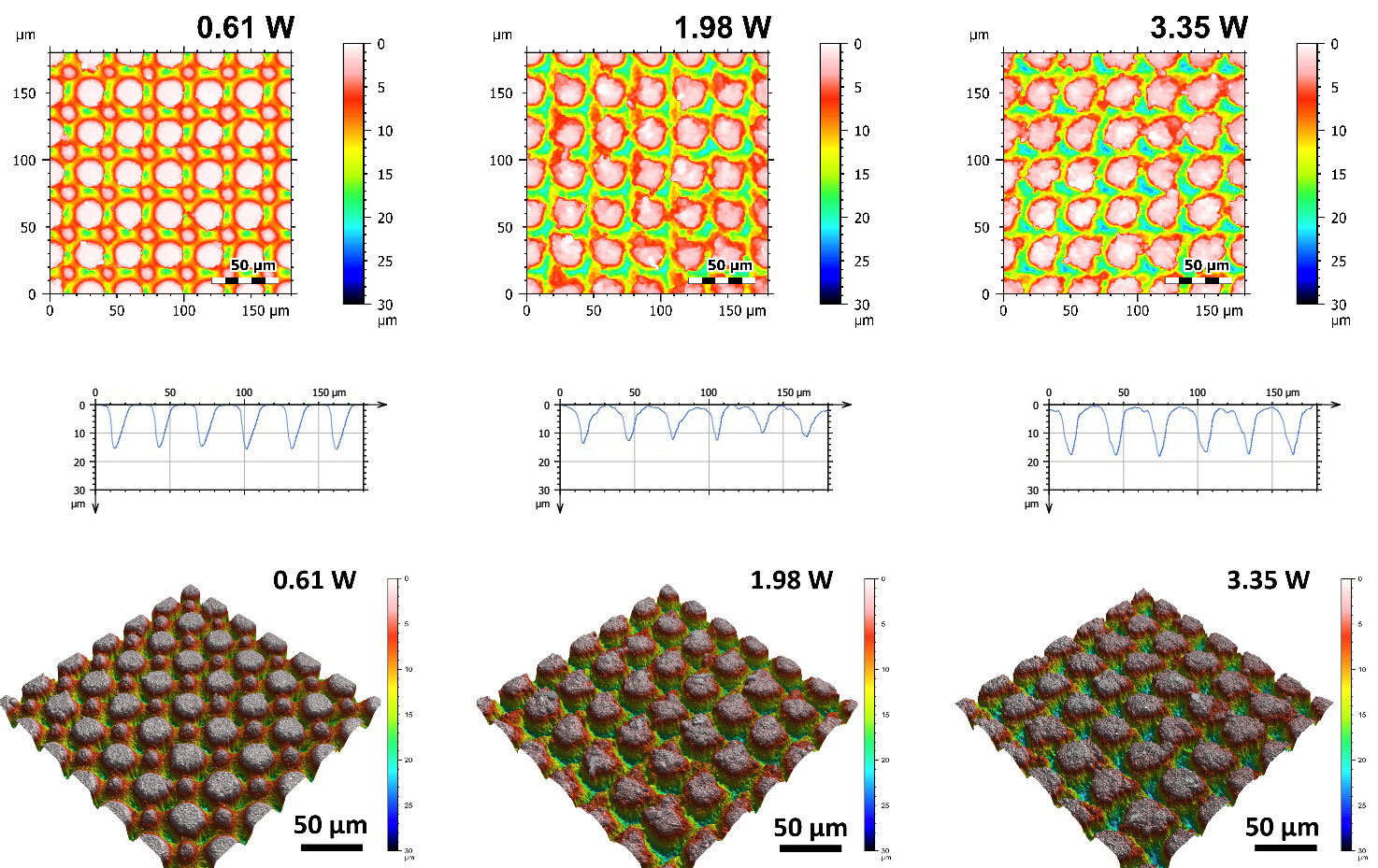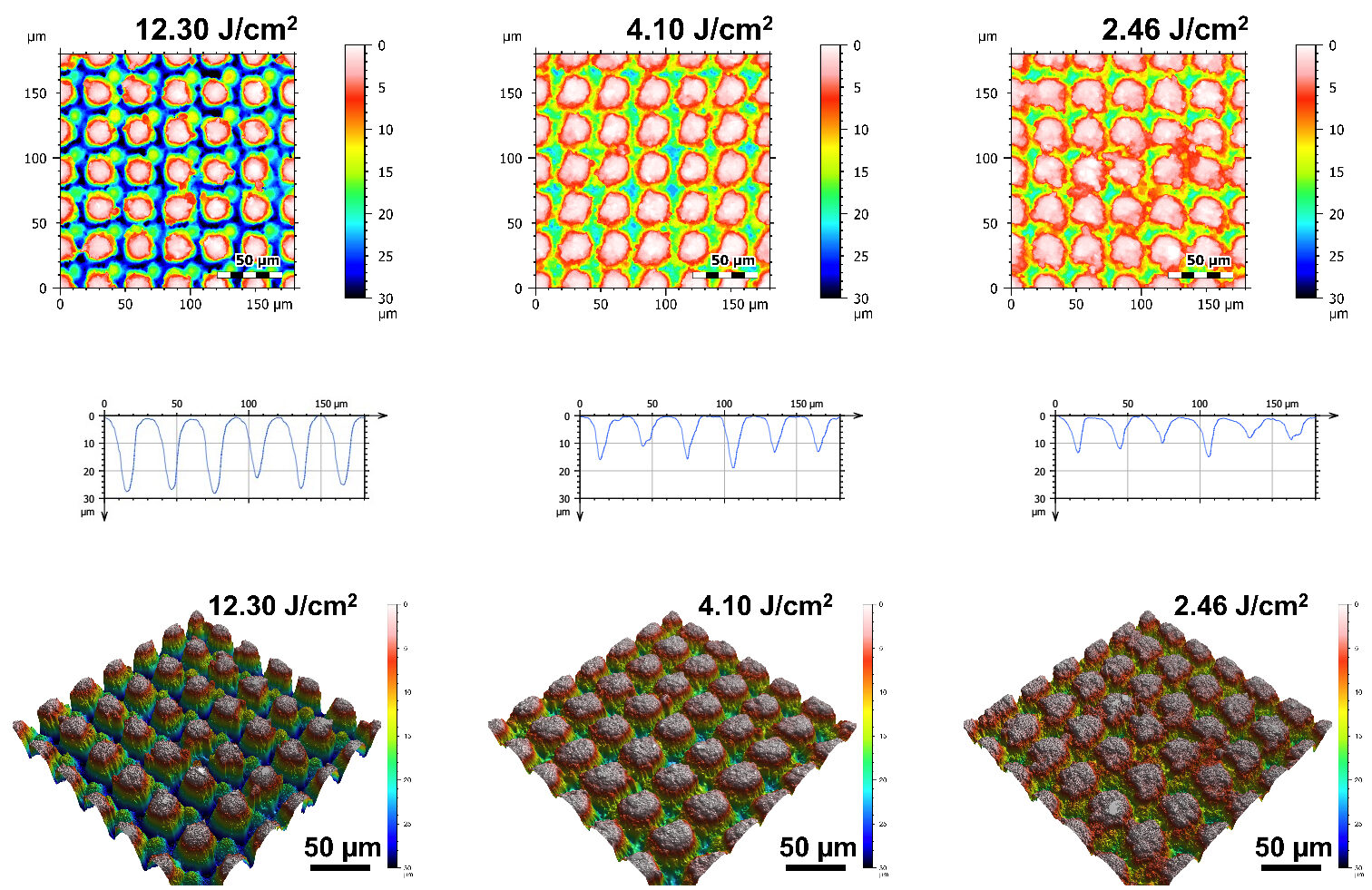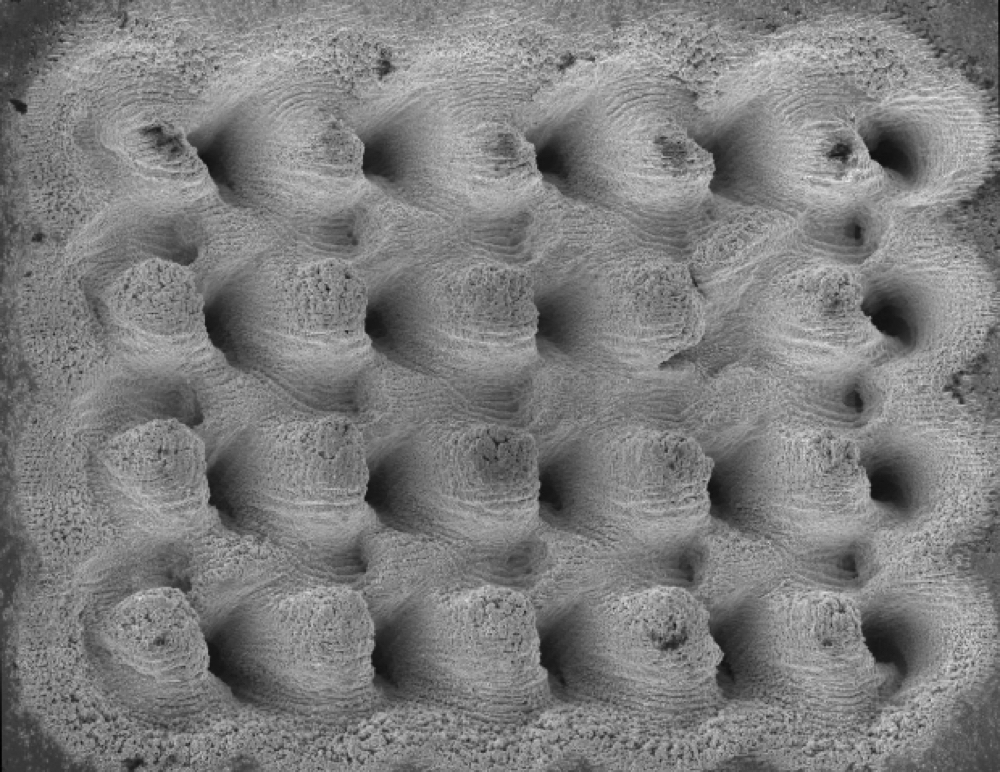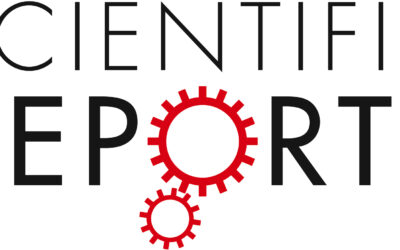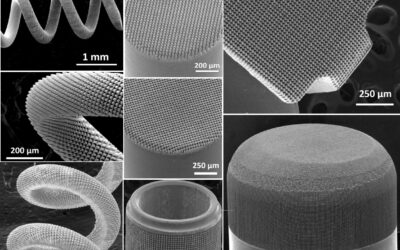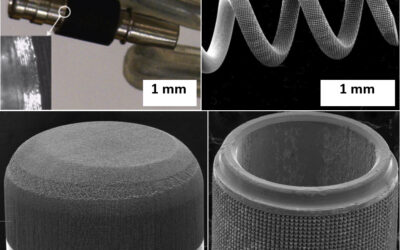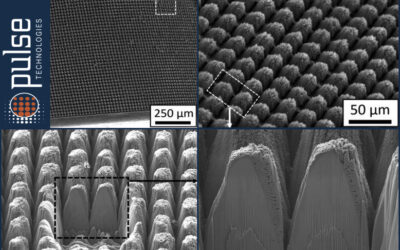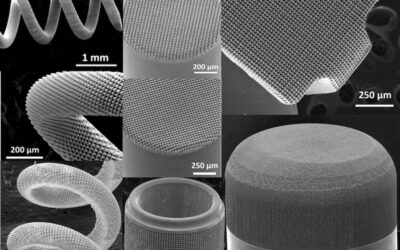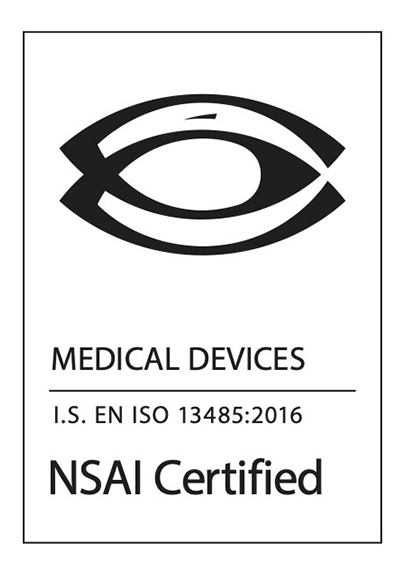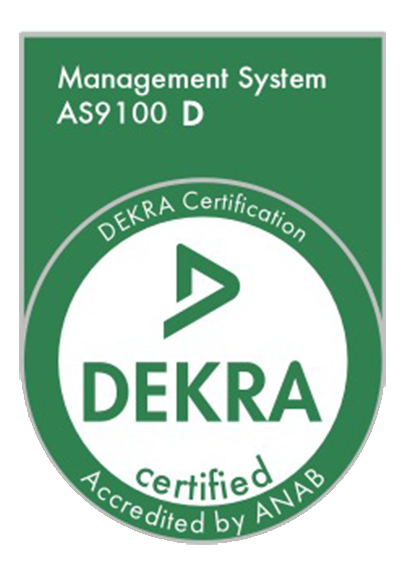Hierarchical Surface Restructuring
HSR™
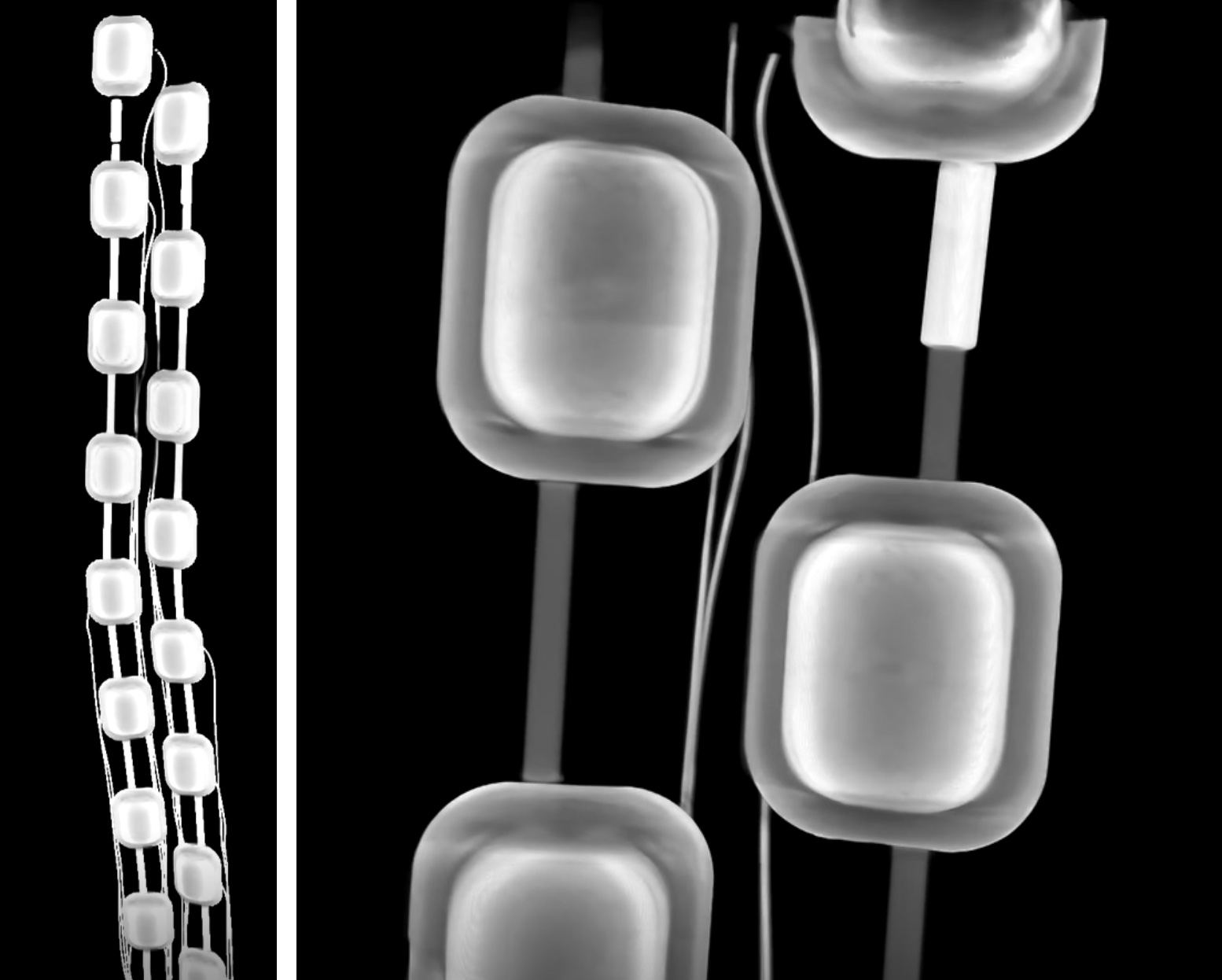
X-ray computed tomography (X-ray CT) image of a 16-channel spinal cord stimulation (SCS) microelectrode array
The Need
Medical device companies are faced with the challenge of enhancing implantable electrode performance. Electrodes and microelectrode arrays in most long-term implantable neurostimulation devices require:
- Low impedance for sensing and recording applications.
- High charge injection capacity to achieve safe and reversible stimulation.
Limitations of Electrodes with Larger Geometric Surface Areas
Electrodes with larger geometric surface areas perform better, but take up more space, limit spatial selectivity, and can harm patients. Maximizing device performance and selectivity often requires introducing a larger number of electrodes or constructing a microelectrode array to activate more neurons or discrete groups of neurons.
How can medical device companies improve device performance, longevity, and effectiveness while optimizing electrode size?
Pulse Technologies’ patented technology – Hierarchical Surface Restructuring (HSR™) – is a game-changer that helps medical device companies achieve the above objectives. HSRTM was developed to enhance implantable electrode performance while allowing for electrode miniaturization.
The Technology
HSR™, a True Game-changer for Next-generation Medical Devices
Pulse Technologies’ patented HSR™ technology uses ultrashort pulse lasers to increase the surface roughness and electrochemical surface area of implantable electrodes by many orders of magnitude.
This novel technology has applications in:
- Neuromodulation
- Cardiac rhythm management
- Electrophysiology mapping catheters
- Cochlear implants
HSR™ can be applied to both electrodes and assembled leads. It is easy to use and has no coating-like overspray, so no masking is required. HSR™ tunes electrode surfaces to improve performance. This proprietary process can be used with a wide range of materials, geometries, and thicknesses and can restructure various surface topographies, depths, and intercolumnar spacing.
Proprietary processes include:
- Creation of customizable topographical features of varying length scales.
- Generation of athermal material ablation, leaving behind no heat-affected zones or microcracking.
- Creation of a more durable surface compared to many coating technologies.
Pulse’s HSR™ technology is a true game changer for the next generation of medical devices. In today’s competitive market, it can be a true differentiator for medical device companies as this novel technology improves device performance, longevity, and effectiveness.
3d Confocal Maps
Select 3D confocal maps of hierarchically restructured surfaces of Pt-10Ir electrodes
Focused ion beam
Focused ion beam (FIB) cross sections of hierarchically restructured Pt-10Ir alloy electrodes restructured at 4.10 J/cm2 fluence (a and b) and 1.98 W average power (c); red dashed arrows show subsurface features likely attributed to laser shock waves
SEM micrographs
SEM micrographs of hierarchically restructured electrodes for various neural interfacing applications: a) a cylindrical, and, b) a helix Pt-10Ir electrode for cardiac rhythm management applications; c) a rivet-style Pt-10Ir electrode for an electrophysiology mapping catheter and, d) a cylindrical Pt-10Ir electrode for use in a percutaneous spinal cord stimulation electrode array
SEM Micrographs
SEM micrographs of the hierarchical surface structure induced on the surface of a Pt-10Ir alloy electrode used for a paddle-lead spinal cord stimulation electrode array
HSR™ Benefits
- Surface tunability
- Ultra-high surface area
- Hierarchical surface structure
- Unprecedented charge storage capacity
- High capacitance and low impedance
- Applicable on complex geometries
- Well-suited for a diverse range of sensing, recording, and stimulating applications
- Scalable and commercially viable
- Can be applied to finished devices
- Market acceptance: active clinical and trial programs underway
Impedance magnitude
a) Impedance magnitude as a function of frequency (plotted in the 0.1-105 Hz frequency range) for a pristine unrestructured Pt-10Ir electrode, and select hierarchically restructured electrodes as a function of average power (only those electrodes restructured at 0.61, 1.52 and 3.35 W are shown for simplicity), b) Impedance magnitude as a function of frequency (plotted in the 0.1-10 Hz frequency range) for a 4 µm thick TiN coated Pt-10Ir electrode and a pristine Pt-10Ir electrode for comparison with the restructured electrode at 0.61 W, and, c) Impedance magnitude as a function of frequency (plotted in the 0.1-10 Hz frequency range) for the 4 µm thick TiN coated Pt-10Ir electrode and the Pt-10Ir electrode restructured at 3.35 W
Cyclic voltammogram
Cyclic voltammograms of, a) a series of electrodes restructured under varying restructuring conditions (0.61 to 3.35 W) and a pristine un-restructured Pt-10Ir electrode (inset), and, b) a 4 µm thick TiN coating for comparison with an electrode restructured at 3.35 W, and a pristine Pt-10Ir electrode; noteworthy is the two orders of magnitude increase in CSCtotal for the electrode restructured at 3.35 W average power compared to its un-restructured counterpart
Confocal Maps
Representative 2D (top row), 1D (middle row), and 3D (bottom row) confocal maps of hierarchically restructured surfaces of Pt-10Ir electrodes at 0.61, 1.98, and 3.35 W Average Power. Note that the cross-sectional profile (1D confocal map) is obtained at the center of the map along the horizontal direction.
Confocal Maps
Representative 2D (top row), 1D (middle row), and 3D (bottom row) confocal maps of hierarchically restructured surfaces of Pt-10Ir electrodes at 12.30, 4.10, and 2.46 J/cm2 Fluence. Note that the cross-sectional profile (1D confocal map) is obtained at the center of the map along horizontal direction.
Hierarchically Structured Surface Schematic
Schematic of a hierarchically structured surface consisting of topographic features spanning a variety of length scales. For most applications, these varying length scales are the coarse-scale rough structures (~1-100 µm) and a finer structure subset (~5-100 nm) on top of the coarse structures.

Successful Biocompatibility Testing with HSR™
HSRTM has successfully cleared all biocompatibility testing with both platinum and titanium electrodes. Biocompatibility was evaluated by performing comprehensive cytotoxicity, sensitization, and irritation testing. Testing was performed at an independent lab in the United States that is accredited under the recognized international standard ISO/IEC 17025:2017
Recent News & Blogs on HSR™
Femtosecond laser hierarchical surface restructuring for next generation neural interfacing electrodes and microelectrode arrays
Shahram Amini, Wesley Seche, Nicholas May, Hongbin Choi, Pouya Tavousi & Sina Shahbazmohamadi Long-term implantable neural interfacing devices are able to diagnose, monitor, and treat many cardiac, neurological, retinal and hearing disorders through nerve...
Pulse Technologies Announces Successful Biocompatibility Results For Novel HSR™ Platinum-Iridium Electrode Surface Treatment Technology
Biocompatibility studies were conducted by an independent, certified lab based in the US in accordance with FDA and ISO standards.
Surface Treatment Technology Using Ultrashort Pulse Lasers Could Help Treat Heart Failure
Hierarchical Surface Restructuring technology can be used to enhance charge storage capacity, increase specific capacitance, & decrease impedance of electrodes & microelectrodes.
Pulse Technologies’ Electrode Surface Treatment Chosen for Cardiac Device
Pulse Technologies’ HSR™ electrode surface treatment is now part of Cardionomic’s Cardiac Pulmonary Nerve Stimulation (CPNS) System for treating heart failure.
Hierarchically Restructured Titanium Electrodes: A Novel, Low-Cost, High-Performing Platform for Leadless Pacemakers
Pulse’s hierarchical titanium surface restructuring is well-suited for enhancing titanium electrodes of leadless pacemakers.
How Pulse’s Newly Patented Hierarchical Surface Restructuring (HSR™) Technology Improves Electrode Performance in Implantable and Diagnostic Medical Devices
This blog post outlines how Pulse’s patented HSR™ technology can enhance the electrochemical performance of electrodes and microelectrode arrays via enhancements in their surface topology and surface characteristics.
Video Explains the Benefits of Hierarchical Surface Restructuring
This video, Hierarchical Surface Restructuring for Electrodes And Microelectrode Arrays, will introduce you to a unique technology that uses lasers to rearrange the molecular surface of electrode materials and promises to enhance the performance of next-generation sensing, recording and stimulating devices.
Schedule a discussion on how HSR™️ can improve your device.
Contract Manufacturing
Advanced Technology
Capabilities
© 2021 Pulse Technologies, Inc. All rights reserved.
 Careers
Careers Contact
Contact
